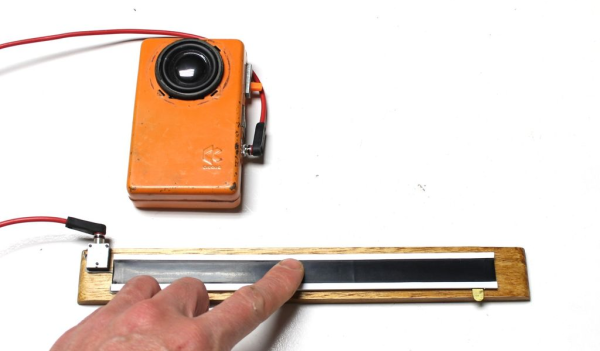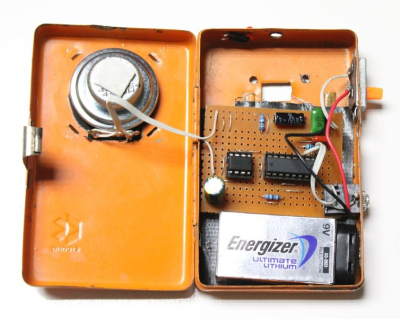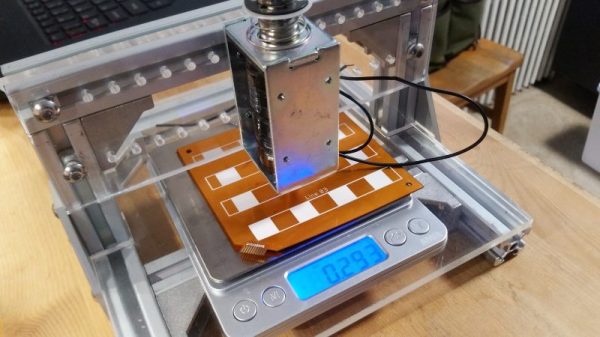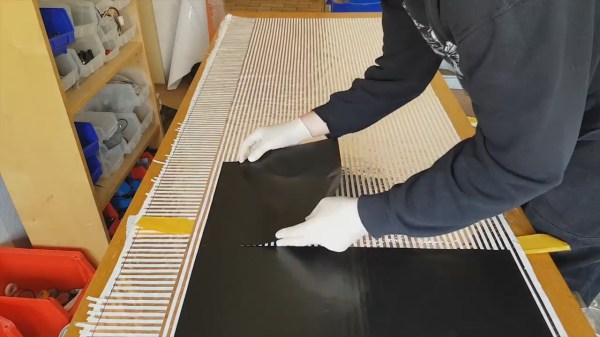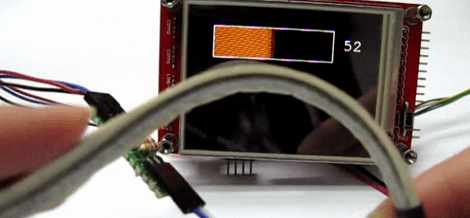They say that sitting is the new smoking. They’re wrong — smoking is much, much worse, for you than sitting, and smoking only while standing or while jogging around the block in no way to justify the habit. But they’re also not wrong that humans weren’t made for extended periods parked on their posteriors, but we do it anyway, to the detriment of our heart health, posture, and general well-being. So something like this butt-detecting stand-up reminder could make a big difference to your health.
While like many of us, [Dave Bennett] has a wearable that prompts him to get up and move around after detecting 30 minutes of sitting, he found that it’s too easy to dismiss the alarm and just go right on sitting. Feeling like he needed a little more encouragement to get up and go, he built a presence detector completely from scratch. His sensor is a sheet of static-protective Velostat foam wrapped in conductive tape; when compressed, the resistance across the pad drops, making it easy to detect with a simple comparator circuit.
We admit to getting excited when we first saw the alarm circuit; a quick glance at the schematic seemed like it was based on a 555, which it totally could be. But no, [Dave]’s design goals include protection against spoofing the alarm with a quick “cheek sneak,” which was most easily implemented in code. So that 8-pin device in the circuit is an ATtiny85, which sounds the alarm after 30 minutes and requires him to stay off his butt for a full minute before resetting. The video below hits the high points of design and shows it in use.
Annoying? Yes, but that’s the point. Of course a standing desk would do the same thing, but that’s not going to work for everyone, so this is a nice alternative.
Continue reading “Presence-Detecting Cushion Keeps You From Sitting Your Life Away”


